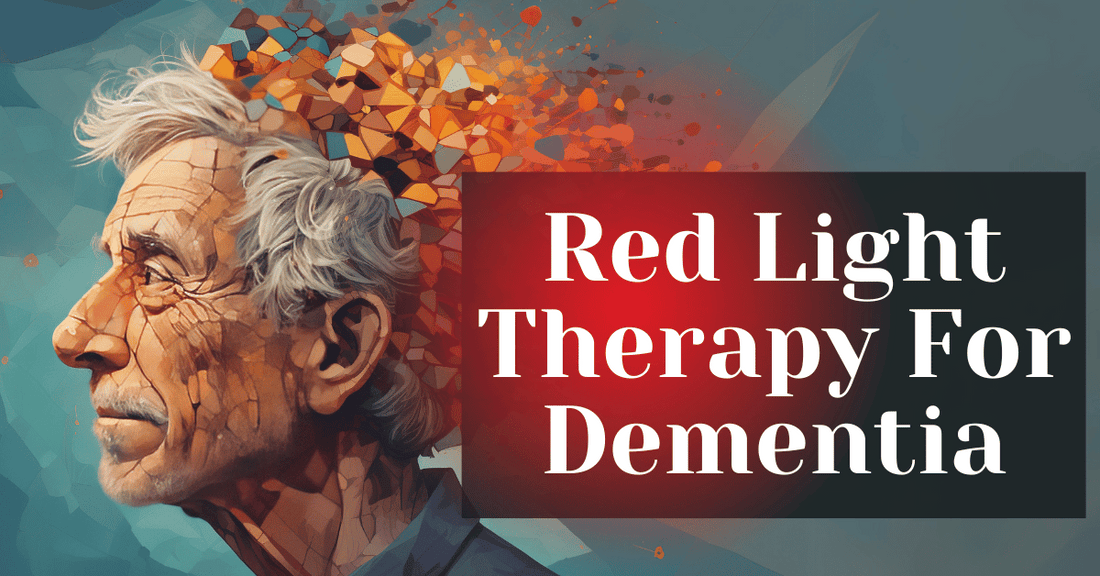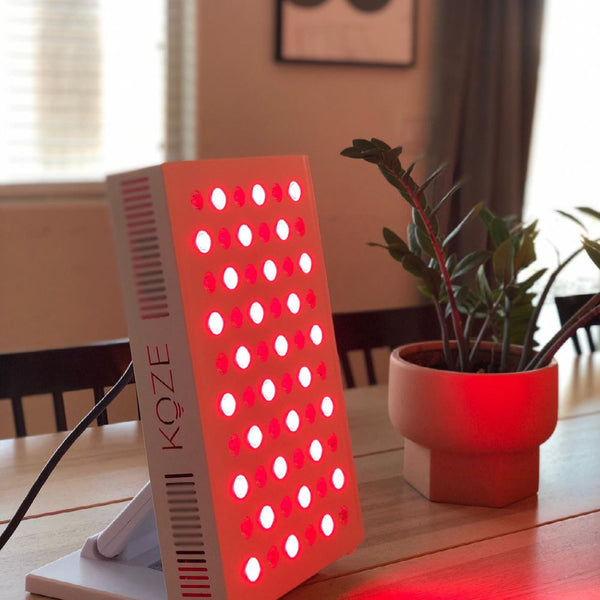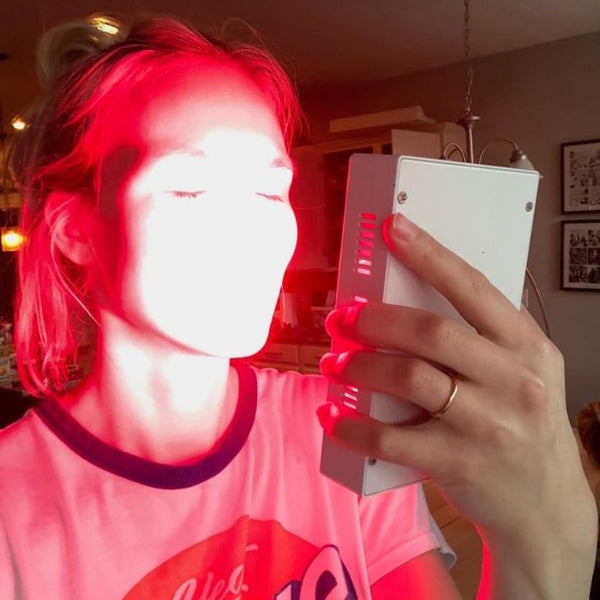
Red Light Therapy For Dementia
Dementia is a progressive neurological disorder that affects millions of individuals worldwide, causing a decline in cognitive function and impacting daily living. With the increasing prevalence of dementia, there is a growing need for effective treatments that can alleviate symptoms and improve the quality of life for those affected. One such promising treatment is Red Light Therapy (RLT), a non-invasive therapeutic technique that has shown potential in managing various health conditions, including dementia.
This blog post aims to provide a comprehensive overview of red light therapy and its application in dementia care. We will explore the science behind RLT, its benefits for dementia patients, and how it can be incorporated into a holistic approach to dementia management. Whether you are a caregiver, a healthcare professional, or someone interested in alternative therapies, this guide will offer valuable insights into the potential of red light therapy for dementia.
What is red light therapy?
Red light therapy (RLT), sometimes referred to as photobiomodulation (PBM) or low-level laser therapy (LLLT), is a therapeutic approach that stimulates cellular processes and advances healing by using low-power red and near-infrared light. The therapy involves exposing the skin to a specific wavelength of light, typically ranging from 630 to 700 nanometers for red light and 780 to 1100 nanometers for near-infrared light.
How does red light therapy work?
The mechanism behind RLT is based on the principle that certain wavelengths of light exposure can penetrate the skin and be absorbed by the mitochondria, the energy-producing organelles in cells. This absorption stimulates the production of adenosine triphosphate (ATP), the primary energy carrier in cells, leading to enhanced cellular function and regeneration.
The Science Behind RLT and Its Effects on the Brain
Research has shown that RLT can have several positive effects on brain health, including:
-
Increased Blood Flow: RLT can enhance circulation, bringing more oxygen and nutrients to brain cells.
-
Reduced Inflammation: Chronic inflammation is a key factor in many neurodegenerative diseases, including dementia. RLT can help reduce inflammation, potentially slowing the progression of the disease.
-
Neuroprotection: RLT has been shown to protect neurons from damage and stimulate the growth of new brain cells.
Types of Red Light Therapy Devices
There are various RLT devices available on the market, including:
Handheld LED Wands:
Portable and easy to use, ideal for targeted treatment.
light-emitting diodes (LED) panels:
Larger devices that can treat broader areas of the body.
Wearable Devices:
Such as caps or helmets designed specifically for treating the head and brain.
Understanding Dementia
Dementia is a collective term used to describe a range of neurodegenerative disorders characterized by a decline in cognitive functions such as memory, language, problem-solving, and attention. It is a progressive condition that significantly impacts the daily lives of individuals and their families.
Overview of Dementia

-
Definition: Dementia is not a single disease but a syndrome encompassing various symptoms associated with a decline in brain function.
-
Symptoms: Common behavioral symptoms include memory loss, difficulty in communication, impaired judgment, disorientation, and changes in mood and behavior.
-
Stages: Dementia can be classified into mild, moderate, and severe stages, each with its own set of challenges and care requirements.
Common Types of Dementia

1. Alzheimer's Disease: is the most prevalent form of dementia, characterized by the buildup of amyloid plaques and tau tangles in the brain.
2. Vascular Dementia: caused by decreased cerebral blood flow, frequently as a result of a stroke or other vascular diseases.
3. Lewy Body Dementia: Associated with abnormal protein deposits called Lewy bodies in the brain, leading to cognitive and motor symptoms.
4. Frontotemporal Dementia: Involves degeneration of the frontal and/or temporal lobes of the brain, affecting behavior, language, and emotional regulation.
Challenges Faced by Individuals with Dementia and Their Caregivers
Communication Difficulties:

As dementia progresses, individuals may struggle to express themselves and understand others.
Behavioral Changes:

Mood swings, agitation, and aggression can be challenging for caregivers to manage.
Safety Concerns:

Memory loss and confusion can increase the risk of accidents and injuries.
Emotional Impact:

Both the control group or individual with dementia and their caregivers may experience stress, frustration, and grief.
The Connection Between Red Light Therapy and Dementia
Recent studies have shed light on the potential of bright light therapy or red light therapy as a complementary treatment for dementia. The therapy's ability to penetrate deep into the brain and stimulate cellular processes holds promise for addressing some of the underlying mechanisms of neurodegenerative diseases.
Further Research Studies Highlighting the Effects of RLT on Dementia Patients
-
Cognitive Function: A study published in the Journal of Alzheimer's Disease found that transcranial red light therapy improved cognitive function and mood in patients with mild to moderate dementia.
-
Brain Connectivity: Research in the journal Photobiomodulation, Photomedicine, and Laser Surgery showed that RLT could enhance brain connectivity and potentially slow the progression of Alzheimer's disease.
How RLT Can Potentially Improve Cognitive Function and Memory in Dementia
-
Neuroprotection: RLT may protect neurons from damage and reduce the accumulation of toxic proteins associated with dementia.
-
Neurogenesis: There is evidence to suggest that RLT can stimulate the growth of new brain cells, which could help improve memory and cognitive function.
-
Energy Production: By enhancing mitochondrial function, RLT can increase energy production in brain cells, potentially improving their performance.
The Role of RLT in Reducing Inflammation and Oxidative Stress in the Brain
-
Inflammation: Chronic inflammation is a hallmark of many neurodegenerative diseases. RLT has anti-inflammatory properties that can help reduce inflammation in the brain.
-
Oxidative Stress: RLT can also reduce oxidative stress, which is caused by an imbalance of free radicals and antioxidants in the body. Reducing oxidative stress can protect brain cells from damage.
Benefits of Red Light Therapy for Dementia Patients
Red light therapy offers several potential benefits for individuals with dementia, contributing to an improved quality of life and potentially slowing the progression of the disease.
Improvement in Overall Cognitive Function and Memory Recall
-
Enhanced Cognition: Patients who undergo RLT may experience significant improvement in cognitive functions such as memory, attention, and problem-solving skills.
-
Memory Recall: RLT has been shown to improve memory recall, which is particularly beneficial for individuals with dementia who struggle with short-term memory loss.
Reduction in Symptoms of Depression and Anxiety Often Associated with Dementia
-
Mood Enhancement: The therapy can have a positive impact on mood, reducing symptoms of depression and anxiety that are common in dementia patients.
-
Stress Reduction: RLT can also help lower stress levels, promoting a sense of well-being and relaxation.
Enhanced Sleep Quality and Circadian Rhythm Regulation
-
Improved Sleep: Many dementia patients suffer from sleep disturbances. RLT can help regulate sleep patterns and improve sleep efficiency or overall sleep quality.
-
Circadian Rhythm: By supporting the body's natural circadian rhythm, RLT can help normalize sleep-wake cycles, which are often disrupted in dementia.
Potential Neuroprotective Effects
-
Cellular Protection: RLT may offer neuroprotective benefits by shielding brain cells from damage and supporting their recovery.
-
Reduction of Neuroinflammation: By reducing inflammation in the brain, RLT can help protect neurons and maintain cognitive function.
How to Use Red Light Therapy for Dementia
Incorporating red light therapy into a dementia care plan requires careful consideration of the type of device, treatment protocol, and safety measures. Here's a guide to help you get started.
Guidelines for Selecting the Right RLT Device for Dementia Treatment
1. Wavelength: Choose a device that emits red and near-infrared light within the therapeutic range (630-700 nm for red light, 780-1100 nm for near-infrared light).
2. Power Density: Ensure the device provides an appropriate power density for effective penetration and stimulation of brain cells.
3. FDA Approval: Opt for FDA-approved devices that have undergone rigorous testing for safety and efficacy.
4. Ease of Use: Consider the usability of the device, especially if it will be used by elderly individuals or their caregivers.
Recommended Treatment Protocols and Duration for Optimal Results
-
Frequency: Start with a frequency of 3-5 times per week, gradually increasing as tolerated.
-
Duration: Each session should last between 10-20 minutes, depending on the device's intensity and the individual's response.
-
Consistency: Consistent use over several weeks to months is crucial for observing tangible benefits.
Safety Considerations and Potential Side Effects of RLT
-
Eye Protection: Wear protective goggles or ensure the eyes are not directly exposed to the light, especially with near-infrared wavelengths.
-
Skin Sensitivity: Monitor the skin for any adverse reactions, such as redness or irritation, and adjust the treatment accordingly.
-
Medical Consultation: Always consult with a healthcare professional before starting RLT, especially for individuals with dementia or other underlying health conditions.
Comparison with Other Dementia Treatments
Red light therapy offers a non-invasive and drug-free alternative to traditional dementia treatments. Understanding how RLT compares with other approaches can help individuals and caregivers make informed decisions about incorporating it into a comprehensive care plan.
Conventional Treatments for Dementia and Their Limitations
-
Medications: Commonly prescribed drugs for dementia, such as cholinesterase inhibitors and memantine, aim to improve symptoms but often come with side effects and limited efficacy.
-
Behavioral Therapies: Non-pharmacological interventions like cognitive-behavioral therapy can be effective but may require significant time and effort from caregivers.
How RLT Complements Existing Therapies and Offers a Non-Invasive Alternative
-
Complementary Approach: RLT can be used alongside traditional treatments to enhance overall efficacy and potentially reduce the need for medications.
-
Non-Invasive and Safe: As a non-invasive therapy with minimal side effects, RLT presents a low-risk option for individuals with dementia.
Cost Comparison Between RLT and Traditional Dementia Treatments
-
Initial Investment: The upfront cost of purchasing an RLT device may be higher than some medications, but the long-term savings from reduced medication use and potential improvements in quality of life can be significant.
Frequently Asked Questions (FAQs) about Red Light Therapy and Dementia
Is red light therapy safe for people with dementia?
Answer: Yes, red light therapy is generally considered safe for people with dementia. However, it's important to consult with a healthcare professional before starting treatment, especially if the individual has other health conditions or is sensitive to light.
How long does it take to see results from red light therapy for dementia?
Answer: The time it takes to see results can vary depending on the individual and the severity of their dementia. Some people may notice improvements in mood and sleep within a few weeks, while cognitive benefits may take longer to manifest.
Can red light therapy cure dementia?
Answer: No, red light therapy cannot cure dementia. However, it may help alleviate some symptoms and improve the quality of life for individuals with dementia.
Are there any side effects of using red light therapy for dementia?
Answer: Red light therapy is generally well-tolerated, with few reported side effects. The most common side effect is temporary skin redness at the site of treatment.
Can red light therapy be used in combination with other dementia treatments?
Answer: Yes, red light therapy can be used alongside other dementia treatments, such as medications and behavioral therapies. It's important to coordinate with healthcare professionals to ensure a comprehensive and safe treatment plan.
Can red light therapy be used at home for dementia treatment?
Answer: Yes, red light therapy can be used at home with the appropriate devices. It's important to choose a device that is safe, effective, and suitable for home use. Always follow the manufacturer's instructions and consult with a healthcare professional before starting treatment.
How does red light therapy compare to other light therapies for dementia?
Answer: Red light therapy is one of several light therapies used for dementia, including blue light therapy and full-spectrum light therapy. Each type of light therapy has its own mechanism of action and potential benefits. Red light therapy is specifically known for its ability to penetrate deeper into the tissues and stimulate cellular repair.
Are there any age restrictions for using red light therapy for dementia?
Answer: There are no specific age restrictions for using red light therapy for dementia. However, the safety and efficacy of the treatment may vary depending on the individual's age, health status, and the severity of their dementia. It's important to consult with a healthcare professional to determine if RLT is appropriate for the individual.
Can red light therapy improve communication skills in dementia patients?
Answer: While red light therapy is not specifically targeted at improving communication skills, it may have indirect benefits by enhancing cognitive function and reducing anxiety, which can, in turn, positively impact communication abilities in some dementia patients.
How does red light therapy fit into a comprehensive treatment plan for dementia?
Answer: Red light therapy can be incorporated into a comprehensive treatment plan for dementia as a complementary therapy. It can be used alongside medications, cognitive therapies, and lifestyle interventions to provide a holistic approach to managing the symptoms of dementia.
Conclusion
Red light therapy emerges as a beacon of hope in the realm of dementia care, offering a non-invasive, drug-free approach to managing the symptoms of this challenging condition. Through its potential to improve cognitive function, mood, and sleep quality, RLT presents a promising complementary therapy for individuals navigating the complexities of dementia. The personal stories and case studies discussed underscore the significant impact RLT can have on enhancing the quality of life for those affected by dementia, as well as their caregivers.
While red light therapy is not a cure for dementia, its use as part of a holistic care strategy may offer valuable benefits, helping to mitigate some of the condition's most distressing symptoms. As with any therapy, it is crucial to consult with healthcare professionals to tailor a treatment plan that addresses the unique needs of the individual with dementia.
Call to Action
For those considering red light therapy as a potential treatment option for dementia:
1. Consult with Healthcare Professionals: Before starting any new treatment, it's essential to discuss it with a doctor or healthcare provider to ensure it's suitable for the individual's specific health profile.
2. Research and Select the Right Device: Invest time in finding an FDA-approved red light therapy device that meets the therapeutic requirements for treating dementia.
3. Share Your Experience: If you or a loved one decides to use red light therapy for dementia, consider sharing your journey. Personal stories can provide hope and guidance to others in similar situations.
By exploring innovative treatments like red light therapy and sharing our collective experiences, we can support each other in the journey through dementia, striving for improved quality of life and well-being for all involved.
Resources
For those seeking more information about red light therapy and dementia, the following resources can provide valuable insights and support:
Organizations and Associations
-
Alzheimer's Association: A leading voluntary health organization in Alzheimer's care, support, and research. [https://www.alz.org/](https://www.alz.org/)
-
Dementia Care Central: is an online resource for caregivers and individuals with dementia, offering information on treatments, care strategies, and support. [https://www.dementiacarecentral.com/](https://www.dementiacarecentral.com/)
-
National Institute on Aging: Part of the U.S. Department of Health and Human Services, providing research and information on aging and cognitive health. [https://www.nia.nih.gov/](https://www.nia.nih.gov/)
Research and Studies
-
PubMed: is a database of biomedical literature, where you can search for scientific studies on red light therapy and dementia. [https://pubmed.ncbi.nlm.nih.gov/](https://pubmed.ncbi.nlm.nih.gov/)
-
ClinicalTrials.gov: is a database of privately and publicly funded clinical studies, where you can find ongoing or completed clinical trials on red light therapy for dementia. [https://clinicaltrials.gov/](https://clinicaltrials.gov/)
Support Groups and Forums
- Alzheimer's Forum: An online community for people affected by Alzheimer's and other forms of dementia, offering a space for discussion and support. [https://www.alzconnected.org/](https://www.alzconnected.org/)
- Dementia Friends: An initiative to change people's perceptions of dementia, offering information and support to become a Dementia Friend. [https://www.dementiafriends.org.uk/](https://www.dementiafriends.org.uk/)
By leveraging these resources, individuals and caregivers can gain a deeper understanding of dementia and red light therapy, access the latest infrared light therapy research, and connect with supportive communities.


